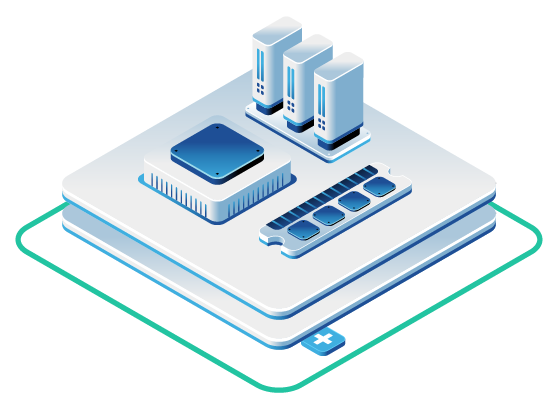
When you’re running validator nodes that secure billions in staked assets, infrastructure failures aren’t just inconvenient. They result in slashed stakes, missed rewards, and lost reputation. For blockchain infrastructure engineers maintaining consensus networks, building a resilient validator cluster requires more than just spinning up a few cloud instances. You need dedicated hardware that delivers consistent performance, isolated networking that prevents cascading failures, and distributed storage that automatically recovers from data loss. This guide explains how combining bare metal servers with OpenStack-based private cloud creates the fault-tolerant foundation validator operators need.
Why Validator Infrastructure Demands More Than Standard Cloud
Validators face a unique set of infrastructure challenges that standard virtualized environments struggle to address. Unlike typical application workloads, validators require predictable performance during consensus operations, guaranteed network connectivity to blockchain peers, and immediate access to state data without latency spikes from noisy neighbors.
Cloud-based infrastructure presents inherent limitations for validator workloads. When you deploy validators on shared virtualized platforms, you’re competing for resources with other tenants. CPU throttling during high utilization periods can cause your validator to miss attestations. Network congestion from adjacent workloads can delay block propagation. Storage I/O limitations can slow state synchronization when the network experiences high transaction volumes.
Bare metal environments provide the control and performance validators require. By dedicating entire physical servers to your validator cluster, you gain direct hardware access without virtualization overhead. This matters when processing thousands of transactions per second or participating in time-sensitive consensus mechanisms where milliseconds determine whether you earn rewards or face penalties.
The choice between cloud and bare metal infrastructure often comes down to what’s at stake. For proof-of-concept testing or running nodes on testnets, cloud scalability makes sense. But when you’re operating production validators responsible for network security and managing substantial stake deposits, bare metal delivers the reliability and control necessary to avoid costly downtime or slashing events.
Core Components of a Resilient Validator Architecture
Building a fault-tolerant validator cluster means designing redundancy into every layer of your infrastructure. Your architecture should isolate validator nodes from external risks while maintaining the connectivity needed to participate in consensus.
Dedicated Bare Metal Servers for Consistent Performance
OpenMetal provides bare metal servers designed specifically for demanding blockchain workloads. Each server runs as a single-tenant environment, meaning all compute, memory, and storage resources serve only your validator operations without interference from other customers.
For validator clusters, teams typically deploy Medium V4 or Large V4 configurations based on their throughput requirements. The Medium V4 includes dual Intel Xeon Silver 4510 CPUs with 256 GB DDR5 memory and up to six NVMe slots, balancing compute capacity and I/O for mid-sized validator networks running multiple consensus clients or maintaining several validator keys on a single machine.
The Large V4 steps up to dual Intel Xeon Gold 6526Y CPUs with 512 GB DDR5 memory and two 6.4 TB Micron 7450 or 7500 MAX NVMe drives. This configuration supports validators that process higher transaction volumes or need to run paired archival nodes alongside active validators. Both server models include dual 10 Gbps network interfaces and dedicated NVMe storage, providing predictable performance without the resource contention you’d encounter on shared infrastructure.
Isolated Private Networking with Redundant Paths
Network reliability directly impacts validator uptime. A single network path failure can disconnect your validator from peers, causing missed attestations even when your servers remain fully operational. OpenMetal addresses this through redundant network architecture at multiple levels.
Each server includes dual 10 Gbps private links for a total of 20 Gbps of internal bandwidth, providing unmetered communication between nodes in your cluster. This private connectivity allows validator nodes to communicate with sentry nodes, share state data, and coordinate failover operations without consuming your public bandwidth allocation or exposing internal traffic to the internet.
Dedicated VLANs isolate customer environments and help validator, sentry, and archive nodes maintain network stability even during switch or path failures. When you configure multiple validators across different VLANs or network segments, a failure in one path won’t cascade across your entire cluster. Your sentry nodes can continue routing traffic while isolated validators reconnect through alternative network routes.
Public connectivity includes dual 10 Gbps uplinks per server with DDoS protection up to 10 Gbps per IP address. Validators that expose RPC endpoints or API services benefit from these protections while retaining control over routing and firewall rules. You can manage all network configuration through OpenMetal Central, OpenStack Horizon, or directly via API. For teams requiring custom network addressing, OpenMetal also supports bringing your own IP blocks for announcement from edge routers.
Self-Healing Storage with Ceph Replication
Validators generate and consume significant amounts of data. Blockchain state, historical blocks, consensus logs, and validator keystores all require persistent storage that remains available even when hardware fails. Traditional RAID arrays provide local redundancy but offer no protection when an entire server fails.
Ceph provides the distributed storage layer within OpenMetal’s private cloud platform. Rather than storing data on a single server, Ceph replicates it across multiple nodes in your cluster and automatically rebalances when hardware fails or new capacity gets added. This means your validator state data remains accessible even if one or more storage nodes experience hardware failures.
Storage servers such as the Large V4 model use NVMe cache combined with enterprise HDDs in a tiered architecture. Four 6.4 TB Micron NVMe drives provide 25.6 TB of cache tier storage, handling the frequent read-write operations needed for validator state data. Twelve 22 TB hard drives deliver 264 TB of raw capacity for the slower but more spacious archive tier, efficiently storing historical blockchain records or snapshots.
You can configure Ceph replication or erasure coding on a per-workload basis, balancing performance with storage efficiency. Critical validator state data might use three-way replication for maximum availability and low-latency access, while historical archive data could use erasure coding to reduce storage overhead without sacrificing durability.
Deploying a Multi-Region Validator Cluster
Geographic distribution prevents regional failures from taking down your entire validator infrastructure. A datacenter power outage, internet service provider routing issue, or natural disaster shouldn’t cause complete validator downtime when you can maintain operations from alternative regions.
Selecting Datacenter Locations for Global Peer Connectivity
OpenMetal operates datacenters in Los Angeles, Virginia, Amsterdam, and Singapore. This geographic spread enables you to position validators near major blockchain network concentrations while maintaining backup capacity in distant regions.
When planning your deployment, consider where your blockchain’s peer nodes concentrate. Ethereum validators benefit from proximity to other validators in North America and Europe. Solana networks show heavy activity in North America. Cosmos Hub and Polkadot relay chains distribute globally. Position your primary validators near these peer concentrations to minimize block propagation latency.
Your backup validators should operate far enough away that regional issues won’t affect both locations simultaneously. A validator cluster split between Virginia and Singapore provides resilience against issues affecting either North America or Southeast Asia. Amsterdam and Los Angeles offer similar geographic separation while maintaining connectivity to different peer networks.
Configuring Sentry Node Architecture for Validator Protection
Production validator deployments shouldn’t expose validator nodes directly to the public internet. Sentry node architecture places publicly accessible nodes between your validators and external peers, filtering malicious traffic and preventing direct attacks on your validator infrastructure.
Your sentry nodes maintain connections to blockchain peers and relay blocks and attestations to private validators behind firewalled network segments. When a DDoS attack targets your public infrastructure, sentry nodes absorb the traffic while validators continue operating normally on isolated VLANs. If a sentry node fails or gets overwhelmed, you can spin up additional sentry capacity without touching validator configurations.
Configure your sentry nodes across multiple regions for geographic redundancy. A validator in Virginia can receive blocks through sentry nodes in both Los Angeles and Virginia. If the Virginia sentry experiences connectivity issues, the validator seamlessly receives blocks through the Los Angeles path. This architecture prevents single points of failure in your network topology.
Automating Failover Between Validator Instances
Manual intervention during infrastructure failures introduces delays that can cause missed attestations before you restore service. Automated failover systems monitor validator health and activate standby instances when primary validators become unresponsive.
Your failover automation should monitor multiple signals: validator process health, peer connectivity status, block synchronization state, and attestation submission success rates. Simple uptime checks aren’t sufficient. A validator might remain running but fall behind on block sync, making it useless for consensus participation.
When failover triggers, your automation must handle validator key migration carefully. Most blockchain networks implement slashing penalties if the same validator key signs blocks from multiple locations simultaneously. Your failover process should confirm the primary validator has stopped before activating the standby instance with the same keys.
Consider configuring active-passive pairs where backup validators remain synchronized but don’t participate in consensus until failover occurs. The backup instance maintains full blockchain state and stays ready to take over within seconds when needed. This approach minimizes the recovery time compared to launching a new validator and waiting for full chain synchronization.
Leveraging OpenStack Private Cloud for Validator Orchestration
OpenMetal’s private cloud platform builds on a three-server Cloud Core that combines OpenStack and Ceph for compute, networking, and storage orchestration. The platform uses containerized services managed with Kolla-Ansible, allowing a production-ready private cloud to deploy in approximately 45 seconds and scale with additional servers in roughly 20 minutes.
This automation matters when you need to recover quickly from hardware loss or expand validator capacity without spending hours on manual reconfiguration. When a server fails, you can provision replacement compute capacity and restore validator instances from distributed storage in minutes instead of hours. During network upgrades that increase validator hardware requirements, you can scale your cluster without taking existing validators offline.
OpenStack provides the control plane for managing compute instances, networking configuration, and storage volumes across your validator infrastructure. Rather than manually configuring each server, you define your validator deployment as code through OpenStack Heat templates or Terraform configurations. This infrastructure-as-code approach ensures you can rebuild your environment with identical configurations if complete recovery becomes necessary.
Compute Management for Validator Workloads
OpenStack Nova manages the compute layer, letting you deploy validator instances as virtual machines across your bare metal servers. While this might seem counterintuitive after discussing bare metal benefits, the virtualization here serves orchestration rather than multi-tenancy. You’re still using dedicated hardware. The hypervisor simply provides deployment flexibility and resource management within your private infrastructure.
You can allocate specific CPU cores and memory amounts to each validator instance, ensuring predictable resource availability. Pin validator instances to specific NUMA nodes on multi-socket servers to minimize memory access latency. Configure CPU feature flags that blockchain consensus clients require, such as AES-NI for cryptographic operations or AVX instructions for mathematical computations.
When hardware maintenance requires taking a server offline, live migration can move validator instances to different hardware without stopping the consensus client. Plan these migrations during low-activity periods and ensure your validator won’t miss attestations during the brief pause involved in transferring memory state between hosts.
Network Isolation Through OpenStack Neutron
Neutron handles all networking within your private cloud, creating the isolated VLANs that protect validator communication and enforcing firewall rules that limit external access. You can define security groups that restrict validator node traffic to only sentry nodes and backup validators, preventing unauthorized access even if an attacker compromises a sentry node.
Software-defined networking lets you reconfigure network topology without physically rewiring switches. When you need to isolate a potentially compromised instance, you can update security group rules to block its traffic immediately. When expanding your validator cluster, you can provision new VLANs and configure routing without involving datacenter technicians.
For validators requiring precise control over network quality of service, Neutron supports bandwidth guarantees and traffic shaping policies. Assign minimum bandwidth allocations to validator instances to ensure they maintain peer connectivity even during network congestion from archive node sync operations or RPC API traffic.
Storage Provisioning with Cinder and Ceph
OpenStack Cinder provides block storage volumes backed by Ceph, letting you manage validator storage independently from compute instances. Create separate volumes for blockchain state data, consensus logs, and validator keystores. When you need to recover a validator on different hardware, you can detach the storage volumes from the failed instance and attach them to a replacement without losing any data.
Ceph clusters automatically replicate data across storage nodes based on the placement policies you configure. Set up three-way replication for validator keystores. Losing these cryptographic keys means losing access to your staked funds. Use erasure coding for historical blockchain data that gets read infrequently but requires long-term retention.
Snapshot capabilities allow you to capture validator state at specific points in time. Before applying a major consensus client upgrade, create a snapshot of your validator volumes. If the upgrade causes issues, you can roll back to the snapshot and restore normal operations within minutes. Automated snapshot schedules provide protection against data corruption or operational mistakes.
Ensuring High Availability Through Infrastructure Design
Building resilient validator infrastructure means thinking through failure scenarios before they occur and designing systems that continue operating when individual components fail. High availability doesn’t eliminate all failures. It ensures failures don’t cause complete outages.
Calculating Validator Uptime Requirements
Different blockchain networks have varying tolerance for validator downtime. Some networks slash validators that miss just a few consecutive attestations. Others impose penalties only after extended downtime spanning hours or days. Understanding your network’s specific requirements shapes infrastructure design decisions.
Calculate your acceptable downtime window based on the network’s slashing conditions and attestation frequency. If your network slashes after missing 10 consecutive attestations and attestations occur every 12 seconds, you have roughly 2 minutes to detect failures and complete failover. This requires automated monitoring and failover. Manual intervention takes too long.
Factor in scheduled maintenance windows when calculating availability targets. If you need 99.9% uptime across a 30-day month, you can afford approximately 43 minutes of downtime. Plan hardware maintenance during network low-activity periods and ensure your failover systems can handle maintenance windows without causing attestation misses.
Implementing Hardware Redundancy
Hardware redundancy prevents individual component failures from causing validator downtime. At the server level, deploy multiple validator instances across different physical machines. When one server experiences hardware failure, your remaining validators continue operating while you replace the failed hardware.
Storage redundancy through Ceph ensures data availability even when drives or entire storage nodes fail. Network redundancy through dual uplinks and VLANs maintains connectivity when network paths fail. Power redundancy through datacenter infrastructure (backup generators, redundant power distribution) protects against electrical issues.
Consider the scope of redundancy you need. Local redundancy within a single datacenter protects against hardware failures but not datacenter-wide issues. Regional redundancy across multiple datacenters in the same geographic area protects against datacenter failures but not regional problems. Global redundancy across continents provides the highest resilience but introduces complexity in managing geographically distributed infrastructure.
Monitoring and Alerting for Proactive Issue Detection
You can’t fix problems you don’t know about. Monitoring systems should track validator performance metrics and alert you before small issues escalate into downtime events.
Monitor validator-specific metrics: attestation participation rate, block proposal success rate, peer connection count, chain synchronization status, and vote credit accumulation. These metrics indicate validator health more accurately than generic server metrics like CPU usage or memory consumption.
Set up graduated alerting that escalates based on severity. Warning alerts notify you of degraded performance that doesn’t yet impact validator operations. Maybe peer connections dropped from 50 to 30, or attestation success rate decreased from 100% to 98%. These warnings let you investigate before they become emergencies.
Critical alerts trigger when validator operations are actually impaired. The validator hasn’t proposed a block when scheduled, attestation success rate dropped below acceptable thresholds, or the chain sync fell behind by more than a few slots. These situations require immediate response to prevent slashing.
Integrate monitoring with incident response systems. When critical alerts fire, your on-call engineers should receive notifications through multiple channels (SMS, phone calls, Slack) to ensure someone responds quickly even during off-hours.
Operational Practices for Long-Term Validator Management
Successfully running validator infrastructure requires more than just solid technical architecture. Operational practices determine whether your validators maintain reliability over months and years of continuous operation.
Maintaining Consistent Software Updates
Blockchain networks frequently release consensus client updates that fix bugs, implement protocol changes, or improve performance. Staying current with these updates prevents compatibility issues when the network activates hard forks or protocol upgrades.
Test all updates in a staging environment before deploying to production validators. Spin up a testnet validator running the same infrastructure configuration as production. Apply the update and verify the validator continues participating in consensus normally. Look for issues with memory usage, CPU utilization, database migration problems, or peer connectivity failures.
Rolling updates allow you to upgrade validators without causing complete cluster downtime. Update one validator instance at a time, waiting to confirm normal operation before proceeding to the next instance. This approach means you always have active validators participating in consensus even during the update process.
Document your update procedures so any team member can execute them consistently. Ambiguity in operational procedures leads to mistakes during high-pressure situations like emergency security patches. Your documentation should cover pre-update verification, step-by-step update commands, post-update validation checks, and rollback procedures if issues occur.
Securing Validator Keys and Access
Validator private keys represent direct access to your staked funds. Compromised keys allow attackers to submit invalid attestations that trigger slashing penalties or sign withdrawal transactions that steal your stake. Key security deserves careful attention beyond standard server security practices.
Store validator signing keys separately from withdrawal keys. Signing keys must remain accessible to your validator software for normal operations. Withdrawal keys should stay offline in cold storage until you need to withdraw staked funds. This separation limits the damage from a signing key compromise. Attackers can cause slashing penalties but can’t steal your entire stake.
Use hardware security modules (HSMs) or remote signing services to keep validator keys off the validator servers themselves. When your validator needs to sign an attestation, it sends the signing request to a remote signer that holds the keys in secure hardware. This architecture prevents key extraction even if attackers completely compromise your validator servers.
Rotate access credentials regularly. SSH keys, API tokens, and service account passwords should change on a scheduled basis. When team members leave your organization, immediately revoke their infrastructure access and rotate any credentials they possessed. Audit access logs periodically to verify only authorized personnel accessed validator infrastructure.
Planning for Disaster Recovery Scenarios
Hope for the best but plan for the worst. Disaster recovery planning considers scenarios where your primary infrastructure becomes completely unavailable and determines how you’ll restore validator operations.
Document your validator configuration in detail: network settings, consensus client versions, validator key locations, storage volume mappings, and firewall rules. Store this documentation separately from your infrastructure so you can access it when recovering from failures. Version control this documentation alongside your infrastructure-as-code definitions.
Test your recovery procedures at least quarterly. Schedule a disaster recovery drill where you simulate complete loss of a datacenter and practice restoring validators in an alternate location. These drills reveal gaps in your documentation, identify dependencies you hadn’t documented, and build team confidence in executing recovery procedures under pressure.
Maintain offline backups of validator keystores encrypted with strong passphrases. Store these backups in geographically separate locations from your primary infrastructure. When disaster strikes, these backups let you recover validator operations even if your entire infrastructure becomes inaccessible.
Why Open Source Infrastructure Matters for Validators
OpenMetal’s architecture relies entirely on open-source technologies: OpenStack for cloud orchestration, Ceph for distributed storage, and Docker for service containerization. This open-source foundation provides advantages beyond cost savings.
You avoid vendor lock-in that traps you on proprietary platforms. When your infrastructure uses open standards and open-source software, you can migrate to different providers or rebuild in different environments using the same tools and configurations. This flexibility matters when you need to diversify infrastructure providers for geographic redundancy or negotiate better pricing.
Open-source software enables you to inspect how systems work and customize behavior for your specific requirements. If your validator workload requires specific storage tuning or network configurations, you can modify open-source components rather than waiting for a vendor to implement features. Access to source code also helps troubleshooting. When something breaks, you can examine the code to understand exactly what failed.
The open-source community provides extensive documentation, troubleshooting resources, and collective knowledge. When you encounter issues, you can find solutions from other operators who faced similar challenges. This shared knowledge base accelerates problem resolution compared to proprietary systems where only vendor support can help.
Because OpenMetal’s platform uses standardized open-source components, environments can be rebuilt with identical configurations if failures occur. You can define your validator infrastructure as code using OpenStack Heat templates or Terraform, then redeploy that infrastructure in different datacenters with high confidence it will behave consistently. This reproducibility simplifies both disaster recovery and geographic expansion.
Moving Forward with Resilient Validator Infrastructure
Building validator infrastructure that maintains uptime through hardware failures, network disruptions, and regional outages requires planning across multiple layers: dedicated hardware for consistent performance, redundant networking to prevent connectivity loss, distributed storage that survives server failures, and orchestration tools that automate recovery processes.
OpenMetal’s combination of bare metal servers and OpenStack private cloud provides the foundation for this resilient architecture. Dedicated hardware eliminates performance variability from noisy neighbors. Redundant network paths prevent single points of failure. Ceph storage maintains data availability across node failures. OpenStack orchestration automates deployment and recovery.
For infrastructure teams managing validators that secure significant stakes, these architectural choices directly impact operational success. Validator rewards depend on consistent uptime. Stake security depends on proper key management and infrastructure isolation. Long-term operational efficiency depends on automation that reduces manual intervention.
When you’re ready to deploy validator infrastructure designed for fault tolerance, explore OpenMetal’s solutions tailored for blockchain workloads. The architecture described here builds on the same foundation used by blockchain organizations running production validators, storage nodes, and consensus infrastructure across global networks.
Read More on the OpenMetal Blog


































